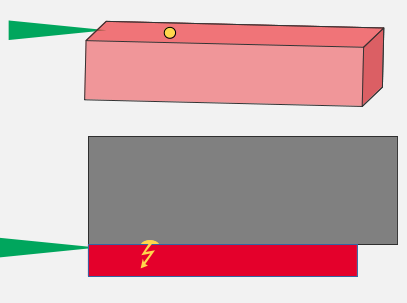CATEGORIES
Visual Inspection
The motivation behind
The visual (also called optical) inspection of the laser diodes helps to ensure that only bars with the desired quality are shipped to the end-user.
Even when all processes are performed well within specified parameters, defects can happen. There are quality controls in production at all critical production steps to early identify deviations and many of them are simple optical controls with a microscope. Detailed optical inspection for defects can be time-consuming but is a relatively inexpensive yet fairly effective approach to capture laser dies with issues. Specially considering the risk of continuing the fabrication or even worse delivering defective devices. The devices with issues are separated from the flawless dices or laser bars to ensure that no potentially defective part is delivered to the end-user and causes much higher economic and/or personal damage.
For laser diodes it is customary to have several optical inspections during the manufacturing process. It is best practice to optically inspect each and every single laser diode prior to delivery to make sure that the main sources of device failure are not delivered to the customers. The main sources of concern can be thick particles on the soldering surface that could create mechanical stress, semiconductor cracks leading to the active zone, scratches that could generate an electrical short circuit and defects on the active areas of the facets where the highest optical energy densities are achieved.

Optical inspection can detect the size and height of protruding particles on the top side. Although they can be sometimes be removed with a q-tip or another soft cleaning method, in many cases the particles are baked in into the metallization or even deeper into the epitaxially grown heterostructure. Although they look harmless, when the p-side is hard soldered to a heat sink, the protruding particle exerts a lot of mechanical pressure on the semiconductor. This can produce cracks, short circuits or a bending of the energy bands that lead to a absorption area of the laser light. This will destroy the laser after short operation. Better is to sort these diodes out and try to clean them.
Do you like what you see?
We value your feedback, so let us know what you think!
Let us also know which topics you would like to see expanded.
Just give us a call, send us an e-mail or use the form to contact us.
